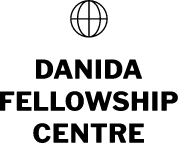The connection between sustainable menstruation management, women’s health and Human Security
Description
Abstract:
Menstrual health management (MHM) has long been ignored in the field of sexual and reproductive health (SRH) and in development projects. Only recently, the combination of MHM and improvements of educational outcomes has become popular, especially amongst NGOs and the corporate social responsibility (CSR) departments of corporations that produce and sell menstrual health products. The public in the global north has become more aware of menstruation as a development issue due to news outlets reporting about deathly incidents of menstrual seclusion in Nepal or prostitution in exchange for menstrual products in Kenya.
Most work on this issue has been in direct relation to closer the gender gap in education and improving menstrual health conditions is widely accepted to contribute to keeping girls in school, which in turn is assumed to have beneficial effects on societies as a whole.
Driven by a desire to better understand the challenges young girls face in East Africa, I set out to explore the connection between MHM practices and financial insecurity. However, additionally to financial challenges, I included the cultural aspect of menstrual taboos and the gendered hierarchical society. By locating menstruation within these broader contexts, I am showing the interconnectedness of SRH, MHM, underlying social structures and power relations. I argue that the pervasiveness of patriarchal structures entangled in Tanzanian society, the financial and economic disadvantages and the taboo of menstruation are forms of structural violence against women. They result in MHM practices that put women and girls at higher risk in terms of assault, direct violence and health problems.
To illustrate this, I have gathered qualitative data to analyse various strategies that schoolgirls use to obtain MHM products or money to buy products. The main strategies I have encountered are support from family, teachers or school staff, friends and community members, work and engaging in transactional sexual relationships. Whilst these strategies all show a degree of agency, I am exploring the inhibitions through social structures and show the damaging consequences some of the girls’ methods can have.
In my research, I have focused on schoolgirls between the age of 12 and 19. I am showing that their position and assigned identity in the patriarchal structures of Tanzanian society affects their capabilities and agency in terms of MHM management and various human security dimensions, such as health, financial and personal security. Consequently, I am illustrating that human security, and especially its health- and personal security dimensions, is an adequate framework to discuss menstruation.
Outputs
Abstract:
Menstrual health management (MHM) has long been ignored in the field of sexual and reproductive health (SRH) and in development projects. Only recently, the combination of MHM and improvements of educational outcomes has become popular, especially amongst NGOs and the corporate social responsibility (CSR) departments of corporations that produce and sell menstrual health products. The public in the global north has become more aware of menstruation as a development issue due to news outlets reporting about deathly incidents of menstrual seclusion in Nepal or prostitution in exchange for menstrual products in Kenya.
Most work on this issue has been in direct relation to closer the gender gap in education and improving menstrual health conditions is widely accepted to contribute to keeping girls in school, which in turn is assumed to have beneficial effects on societies as a whole.
Driven by a desire to better understand the challenges young girls face in East Africa, I set out to explore the connection between MHM practices and financial insecurity. However, additionally to financial challenges, I included the cultural aspect of menstrual taboos and the gendered hierarchical society. By locating menstruation within these broader contexts, I am showing the interconnectedness of SRH, MHM, underlying social structures and power relations. I argue that the pervasiveness of patriarchal structures entangled in Tanzanian society, the financial and economic disadvantages and the taboo of menstruation are forms of structural violence against women. They result in MHM practices that put women and girls at higher risk in terms of assault, direct violence and health problems.
To illustrate this, I have gathered qualitative data to analyse various strategies that schoolgirls use to obtain MHM products or money to buy products. The main strategies I have encountered are support from family, teachers or school staff, friends and community members, work and engaging in transactional sexual relationships. Whilst these strategies all show a degree of agency, I am exploring the inhibitions through social structures and show the damaging consequences some of the girls’ methods can have.
In my research, I have focused on schoolgirls between the age of 12 and 19. I am showing that their position and assigned identity in the patriarchal structures of Tanzanian society affects their capabilities and agency in terms of MHM management and various human security dimensions, such as health, financial and personal security. Consequently, I am illustrating that human security, and especially its health- and personal security dimensions, is an adequate framework to discuss menstruation.

